It’s not every day that a 1940s semi-detached house is celebrated as an architectural wonder, but Tom de Paor’s extension project in Harold’s Cross has become one of the hottest tickets of this year’s Open House festival in Dublin which runs from October 12th - 14th.
During the three day event commercial buildings and private homes will open their doors to the public, and in the case of this building, the Courtyard House, to say that the architect has taken a novel approach to a semi-d extension is probably understating the case.
The 1500 sq ft addition, which de Paor describes as like “two different kinds of vehicles parked beside one another,” bears his usual design hallmarks, combining a playful approach with an intelligent, nuanced thinking.
The new interior of this family home belies its origins as a 1940s semi-detached house, created as part of a garden city development in Harold’s Cross.
Our idea of a kitchen and bathroom are radically different than in the 1940s. They're lovely houses, but they often don't have the services we need
“It’s interesting how we need more space now (than before),” observes de Paor. “Our idea of a kitchen and bathroom are radically different than in the ‘40s. They’re lovely houses, but they often don’t have the services we need. Our relationship to light has also changed.”
Cognisant of both, de Paor has taken the home’s unusually wide backyard plot and created a courtyard house with most of it, adding an extra 1500 sq ft of living space: “The idea was that you’d feel like you were in a garden, but not in the modernist way that is normal with rear extensions. I was trying to puncture light across the entire space.”
The dimensions and style of the existing house were left much the same. The new structure, meanwhile, is home to the living areas used during the daytime.
“We decided to put the bedrooms in the ‘old house’ and the new construction was for day time,” says de Paor. “It’s a day house and a night house.”
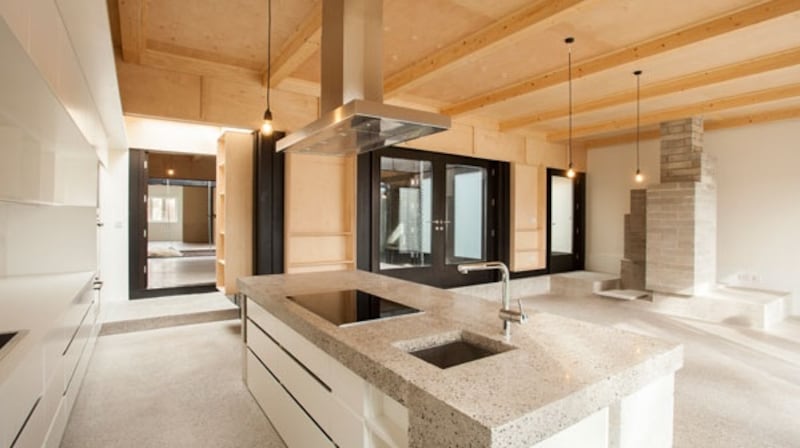
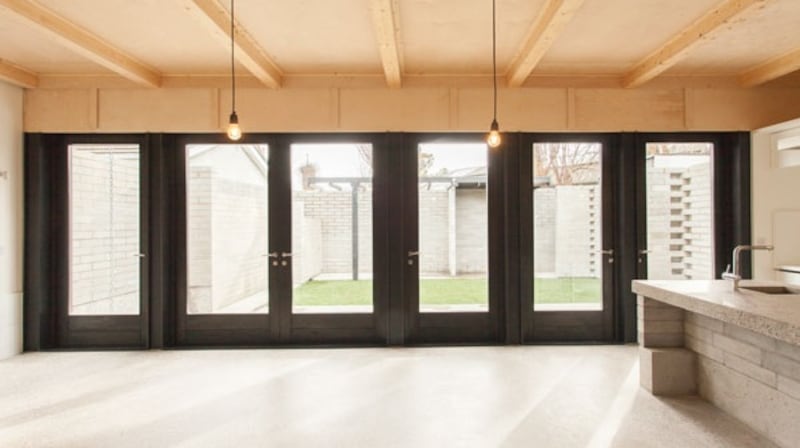
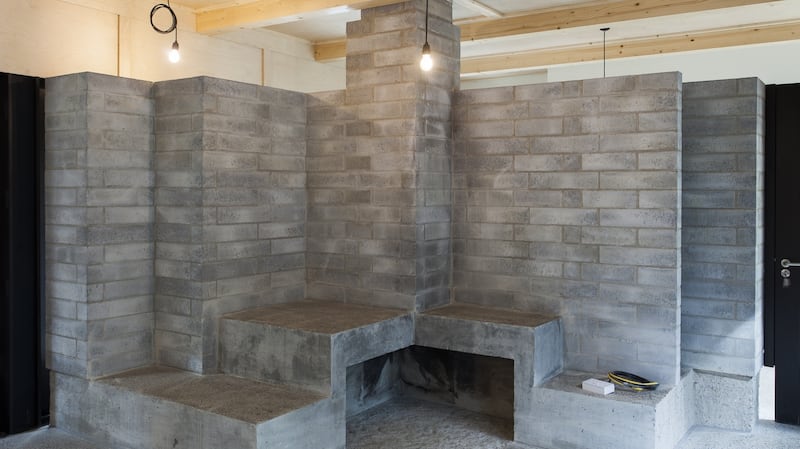
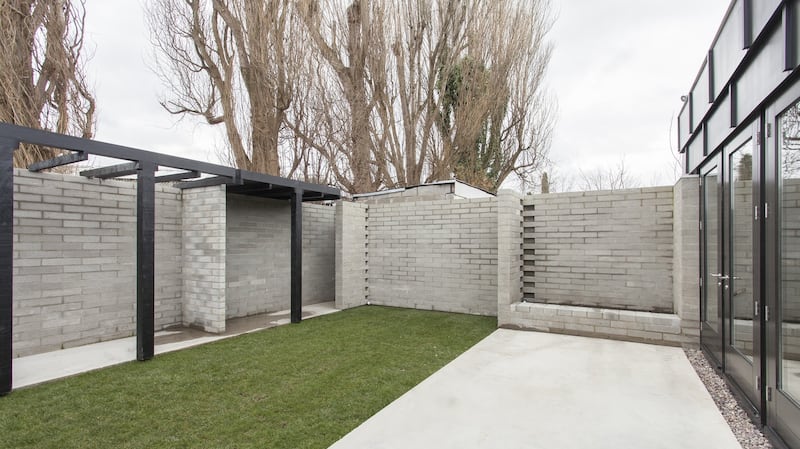
The Courtyard House has been divided into three rooms, served by anterooms. The space was structured as five factory made floor to ceiling trusses with doorways between, allowing for multiple configurations of interior and exterior. Shotblasted and polished concrete, as well as plywood and ebonised saddleboards feature heavily throughout the end design, creating an almost industrial but wholly modern feel.
“The materials are very beautiful in some ways,” notes de Paor. “From the ground up it’s a concrete house, and from the sky down it’s a timber house.”
The joinery in the house is painted a playful gloss orange; an idea of de Paor’s that the clients were more than happy to incorporate.
“I thought that would be fun,” he says “I’ve always loved orange gloss, and it really gives the space a push. It’s jolly, but brings the joinery together.”
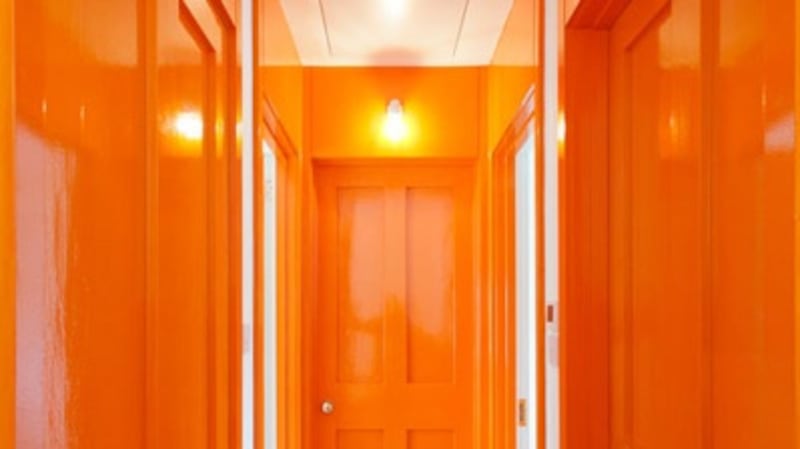
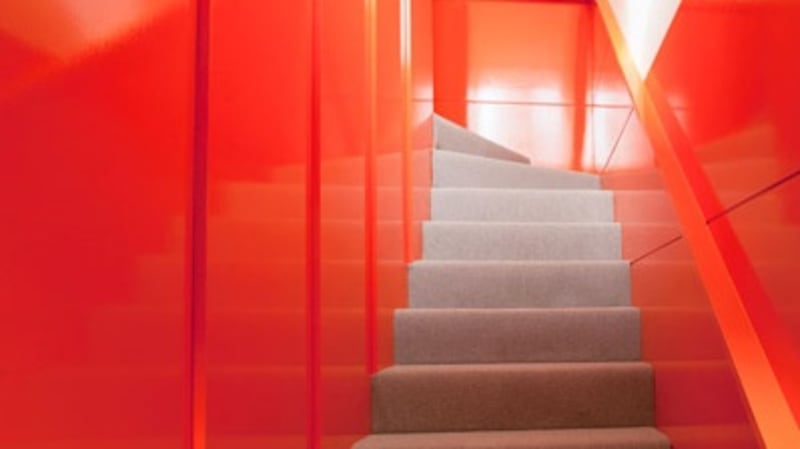
The client, Fiona Sweeney, notes that the end result makes for a simple, joyous and flexible family home.
“It’s amazing,” she enthuses. “As a gardener it was always my intention to try and bring the garden into the house. People step into the house and stop in their tracks as it’s a very unusual space, but has that feeling of being outdoors.
“I wanted a beautiful house that was properly designed, and it’s a very simple space, but that’s the beauty of it,” she adds. “It may have the look of a prison or museum from the pictures you might see, but it’s anything but.
“When we started the project it was a case of ‘let’s pare it back, and think about who we are and what we might like’, and we didn’t want to follow trends, or think about how architecture should be this is what. I wanted the space to let us do the things that accommodated us as a family.”
As for those lucky enough to secure tickets to tour the property through Open House Dublin’s lottery system, de Paor notes: “I tell people to be sure to open the doors, because all the rooms dissolve and because the doors refract the light, it sort of becomes a hall of mirrors. It’s quite comical.”












